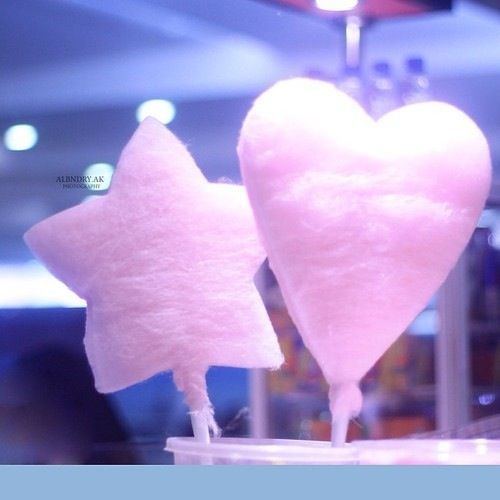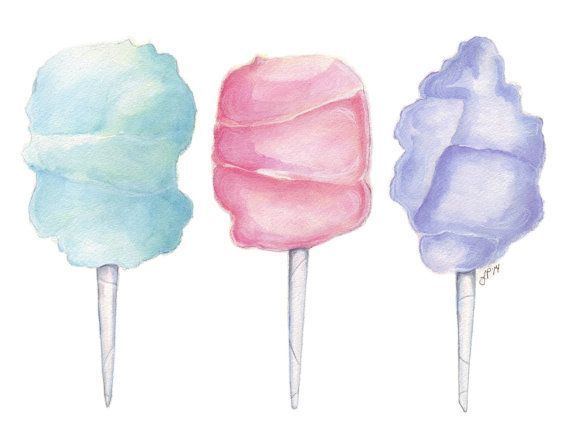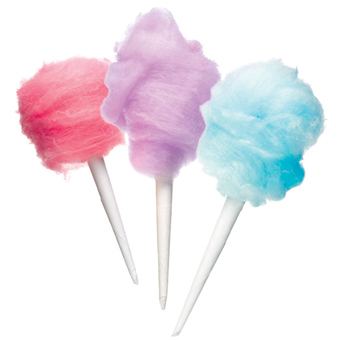 | ||
Alternative names Candy floss, fairy floss Similar Sugar, Popcorn, Marshmallow, Lollipop, Caramel | ||
Make cotton candy fudge with just 4 ingredients just add sugar
Cotton candy (also known as fairy floss in Australia, candy floss in the UK and New Zealand) is a form of spun sugar. According to the New York Times, the confection "is almost 99.999 percent sugar, with dashes of flavoring and food coloring."
Contents
- Make cotton candy fudge with just 4 ingredients just add sugar
- Cotton candy flower the biggest in the world zuckerwatte algod n de az car
- History
- Production
- Flavoring
- Machines
- References

Made by heating and liquefying sugar and spinning it out through minute holes, where it re-solidifies in minutely thin strands of "sugar glass," the final cotton candy contains mostly air, with a typical serving weighing approximately 1 ounce or 30 grams. Often served at fairs, circuses, carnivals, and Japanese festivals, cotton candy is sold on a stick or in a plastic bag. Food coloring can be used to change the natural white color, and numerous flavorings are available to change the taste.

Similar confections include the Indian Sohan papdi, the Persian Pashmak, and the Turkish Pişmaniye, although the latter is made with flour and water in addition to sugar.

Cotton candy flower the biggest in the world zuckerwatte algod n de az car
History

There are several claims for the origin of cotton candy, with some sources tracing it to a form of spun sugar found in Europe in the 19th century. At that time, spun sugar was an expensive, labor-intensive endeavor and was not generally available to the average person. Others suggest versions of spun sugar originated in Italy as early as the 15th century.

Machine-spun cotton candy was invented in 1897 by the dentist William Morrison and confectioner John C. Wharton and first introduced to a wide audience at the 1904 World's Fair as "Fairy Floss" with great success, selling 68,655 boxes at 25¢ per box (equivalent to $7 per box today). Joseph Lascaux, a dentist from New Orleans, Louisiana, invented a similar cotton candy machine in 1921. In fact, the Lascaux patent named the sweet confection “cotton candy” and the "fairy floss" name faded away, although it retains this name in Australia. In the 1970s an automatic cotton candy machine was created which made the product and packaged it. This made it easier to produce and available to sell at carnivals, fairs, and stores in the 1970s and on.
Tootsie Roll of Canada Ltd., the world's largest cotton-candy manufacturer, makes a bagged, fruit-flavored version called Fluffy Stuff.
The United States celebrates National Cotton Candy Day on December 7.
Production
Typical machines used to make cotton candy include a spinning head enclosing a small "sugar reserve" bowl into which a charge of granulated, colored sugar (or separate sugar and food coloring) is poured. Heaters near the rim of the head melt the sugar, which is squeezed out through tiny holes by centrifugal force. Pre-colored sugar packaged specially for the process is milled with melting characteristics and a crystal size optimized for the head and heated holes; granulated sugar used in baking contains fine crystals which spin out un-melted, while rock sugar crystals are too large to properly contact the heater, slowing the production of cotton candy.
The molten sugar solidifies in the air and is caught in a larger bowl which totally surrounds the spinning head. Left to operate for a period, the cotton-like product builds up on the inside walls of the larger bowl, at which point machine operators twirl a stick or cone, around the rim of the large catching bowl, gathering the sugar strands into portions which are served on stick or cone, or in plastic bags. As the sugar reserve bowl empties, the operator recharges it with more feedstock. The product is sensitive to humidity, and in humid summer locales, the process can be messy and sticky.
Modern innovations in cotton candy equipment include vending machines which automatically produce single-servings of the product, developed in Taiwan, and lighted or glowing sticks.
Flavoring
The source material for candy floss is usually both dyed and flavored. In the US, so-called 'floss sugar' is available in a wide variety of flavors, but two flavor-blend-colors predominate - 'blue raspberry' and 'pink vanilla', both originally formulations by the Gold Medal brand (which uses the names 'Boo Blue' and 'Silly Nilly'). Cotton candy also comes out purple, when mixed, making a significant favorite at fairs. Cotton candy machines were notoriously unreliable until Gold Medal's invention of a sprung base in 1949, and since then they have manufactured nearly all commercial cotton candy machines and much of the floss sugar in the US.
Typically, once spun, cotton candy is only marketed by color. Absent a clear name other than 'blue', the distinctive taste of the blue raspberry flavor mix has gone on to become a compound flavor that some other foods (gum, ice cream, rock candy, fluoride toothpaste) occasionally borrow ("cotton-candy flavored ice cream") in order to invoke the nostalgia of cotton candy that people typically only get to experience on vacation or holidays. Pink bubble gum went through a similar transition from specific branded product to a generic flavor that transcended the original confection, and 'bubble gum flavor' often shows up in the same product categories as 'cotton candy flavor'.
Machines
In 1978, the first automated machine was used for the production of cotton candy. Since then the creations and innovations of this machine have become greater and greater. They range in sizes from counter-top accessible to party and carnival size. Modern machines that are made for commercial use can hold up to 3 pounds (1.4 kg) of sugar and have compartments for storage of extra flavors. The rotating bowl at the top spins at 3,450 revolutions per minute.
